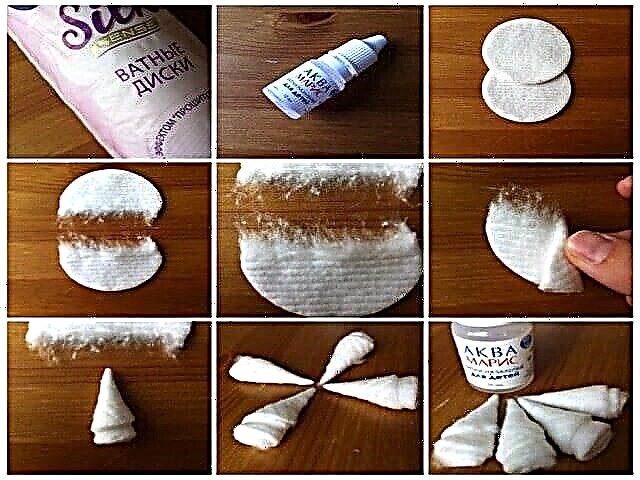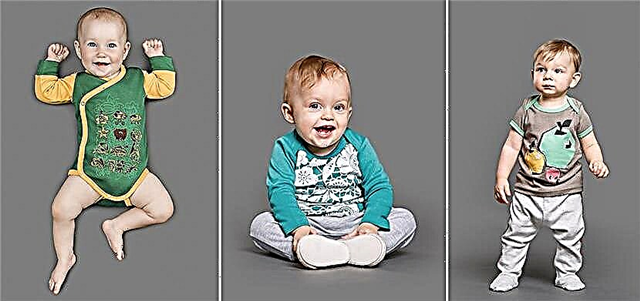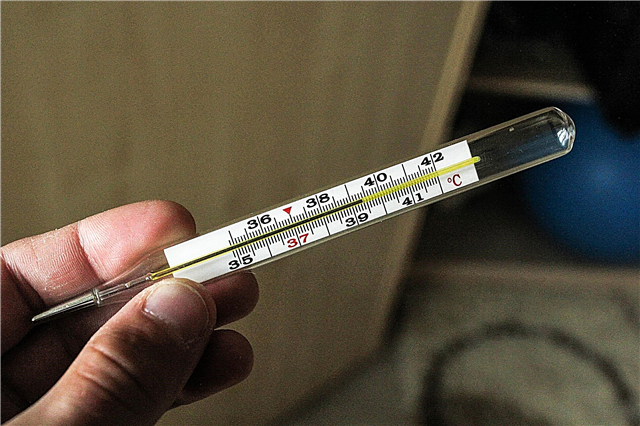
When a child starts going to the potty, in the eyes of his parents he becomes “very big”, so it is understandable that the mother wants to teach the child to write and poop into a toilet object at any cost as soon as possible. But the learning process itself is quite complicated. For it to be successful, parents will need to act consistently and in a timely manner.

When is it time to teach?
There are no rules in medicine, pedagogy and other sciences related to children regarding the timing of comprehending toilet science. For this reason, no one will say for sure when a child should learn to pee in the pot.
Children begin to write and poop in the pot consciously. This happens at the moment when the cortical layer of the brain has matured to the required extent. From birth, children are unable to control their urination and bowel movements. These reflexes are unconditioned, and they will become conditioned when the brain is quite mature. For this reason there is no reason to teach children under one year old to go to the toilet.

Attempts by parents to teach a child to go to the potty before a year can be dangerous because parental insistence in no way leads to the transition of an unconditioned reflex to a conditioned one. And after a year, such children start to "fail" - they protest, persistently pee in their pants, although earlier, according to their parents, they were potty trained.
At the command of mom or dad, the child can theoretically learn to write and poop. But when the reflex begins to "mature", the need to do so will appear in certain situations. This will not happen on command, but with signals from certain sphincters, which appear when the bladder or intestines are full. Therefore, the little one will desperately protest if the parents demand to write when they do not want to write at all.
The age at which to potty train a child should be decided by a family council. But parents must be aware of whether their baby is ready for the upcoming changes. In most cases, attempts to teach a baby to go to the toilet immediately after a year are unsuccessful.


There is a certain pattern between the age of training and the duration of the process. The sooner parents start making such attempts, the more lengthy and traumatic the whole process will be.
It is believed that it is best to make the first attempts to introduce the baby to the pot at a year and a half and later. Toddlers at the age of 2-3 years learn to potty faster. At the same time, no one guarantees that the attempts will be one-time and immediately successful - most likely, you will have to take several approaches with interruptions.
You can determine the best age for a baby based on some signs of the psychological and physiological readiness of the baby. You should not think that by active physical exercises and developing activities with the baby, the mother can accelerate the process of maturation of the cerebral cortex. She matures with age, and here no occupations play a role.

Whether a child is ready to learn toilet tricks can be determined by the following signals:
- the child has developed a certain specific mode of bowel emptying: he goes to the toilet because of great need every day at about the same time (plus or minus a few hours);
- the child has learned to endure - after changing the diaper, the fresh one remains dry for at least an hour and a half;
- the baby learned to understand what the parts of his body are called;
- the baby already knows what the verbs "write" and "poop" in the performance of adults mean;
- the child has become intolerant and annoyed with a dirty or wet diaper;
- the baby has learned to take off his pants by himself or is already unbuttoning his own diaper;
- the baby is not afraid of the bathroom: he enters it with pleasure and interest.

In addition, by the time of the beginning of training, the baby should show the ability to indicate his desires. The fact that he wants to poop, he does not have to communicate in words. But some natural and characteristic of this process actions and sounds the child will publish and produce without fail. Some go to another room and stand in a corner to poop without witnesses in peace and quiet, other children grunt defiantly and at the same time enthusiastically shift the cubes.

If the above signs are present, then the child is ready. But his mom and dad should be ready too: you need to free up enough time and take a two-week vacation to spend all your free time while teaching the child. You also need to replenish your home stocks of motherwort, valerian or corvalol, as well as be patient.
Popular techniques
There are many methods for teaching a child to potty: there are quick and step-by-step, rather long, but quite effective. Parents are most often interested in how to teach their child to go to the potty fast. The technique of the American pediatrician Gina Ford can help with this. Her children's doctor came up with for little patients aged from one and a half to two and a half years.

You need to spend exactly seven days on training. The results should appear in a week, if you do everything as prescribed by Mrs. Ford, and she planned the whole process exactly for a week.
So, to start learning, you need a nice and comfortable pot and a lot of parenting patience.
1 day
When the baby wakes up, he gets rid of the wet and heavy diaper at night. At the same time, the child is told about a heavy and wet diaper, because this is not at all what he needs, since the baby has grown. After removing a dirty diaper, there is no need to rush to put on a clean one - it is better to put the child on a pre-warmed, warm pot and carry away something. At this stage, sit on the pot for at least 10 minutes.

It is possible that the child will categorically refuse the pot. There is nothing wrong with that. In this case, in the morning, the mother should have a favorite toy for her son or daughter - a teddy bear or dog will be able to complete the task for the child. Mom needs to put Tuzik or Mishka on the pot and drop a little water there with an imperceptible movement from behind. Then the toy needs to be removed from the pot, enthusiastically praise it for the right "deed", show the child that there is water in the pot, and together with the baby go to the toilet to drain the pot.

After breakfast, you should offer the pot to the baby and, if you refuse, do the trick with Mishka or Bunny again. And this must be done every 15 minutes throughout the day. It is better to refuse a walk on this day, the diaper can be put on only for daytime sleep and night. When the baby sits on the pot on his own, you must loudly praise him, and if he even pees into it, then the praise should be generous, loud, with gifts and prizes.

If, in the intervals between the sentences of the pot, the child pees in his pants or does it on the carpet in the living room, then you should not scold him. You just need to change your pants.
2 day
The first and second days according to the Ford method are the most difficult periods. They require a constant presence from the mother. On the second day, everything is repeated in the same way with the first day. For a change, you can add flushing water in the toilet - you need to entrust this to your child, he will definitely like the process. Do not forget to praise the child.

Day 3
The third day is very important, because it will offer the baby a new task. Now the baby should start walking, but not alone, but with a pot. For example, a child at 8 months needs to walk twice a day - let him take a pot with him. Of course, this option is well suited for the summer season, for spring and early autumn, but not for winter. If it is cold outside, then it is better to refrain from walking for a few more days.

Children's doctor Gina Ford argues that it is impossible to "give slack" and put on a diaper on the child, even when it comes to a walk, as this will only convince the baby about the existence of some alternatives.
4-6 day
These are the days of consolidating the acquired skill. The pot still accompanies the baby everywhere: at home and on a walk. But gradually the intervals between plantings on the pot can be increased, bringing up to half an hour.

Day 7
On the last day, you should not offer a pot, because this is a summary. The kid should indicate with his behavior or purposeful request the need for a pot as certain physiological desires arise. If for a long time the crumb does not ask for a pot, but remains dry, then he needs to be delicately reminded of the pot.
If the child is taught in a quick manner, you do not need to wake him up at night to plant on the pot. Parents decide to wake up or not. If the baby falls asleep hard, then it is better not to wake him up at night, limiting himself to using the usual disposable diaper.

It should be noted that quick methods are not suitable for all children. Babies with an excitable psyche, prone to hysterics and stubbornness, can "fight" all week, and the result will not be achieved.
There are also slower, but gentle methods for the child's psyche, which are perfect for those who are not in a hurry.
First of all, it is worth placing the pot in the toilet. Every time you need to get the baby there and turn on the water at the tap. The noise of the flowing water leads to the desire to empty the bladder.

Place the pot in the nursery first - let the child get used to the new object. Then you need to teach the baby to sit on it - you can even wear clothes. When the baby realizes that the new item is safe, then he will be imbued with confidence in him.
It is necessary to motivate the planting of the pot, to make it interesting. For example, read a fairy tale while the baby is sitting, sing songs, arrange a performance in the finger theater. You can do whatever you want, as long as the child is interested in sitting on the potty.

You can show by personal example what they do with the toilet. If a boy is growing up in the family, then let him visit the toilet with his dad, and in the case when a girl is growing up, with her mother. The desire to imitate adults at the age of 1.5-3 is very great. Also, younger children love to imitate older brothers and sisters.
All these methods are good because they can be combined with each other, use one or more at the same time or in turn.
Main steps
The stages that parents and the baby have to go to the goal depend on many factors: the perseverance of the parents, the readiness of the baby and his age. At 5-11 months, it is better not to plant either a boy or a girl on a pot, since the process of forming a conditioned reflex has not yet begun. A one-year-old baby can be planted once, and if the attempt is unsuccessful, then postpone potty training for a later time.

The older the child is, the faster he will understand what is wanted from him. But after the diapers, to which he had time to get used, it will be rather difficult to quickly master a new skill. Such children learn to potty better if they use slow methods.
A child 1 year old and older will be able to start potty walking faster if parents are consistent and patient. You can only teach it gradually and in stages. Parents have to go through the following stages:
- rejection and misunderstanding of the new subject and parental requirements;
- interest in a new subject and its possibilities;
- interest in your own body and its capabilities;
- pleasure from the resulting effect;
- pot adoption and habit.


How to speed up the process?
It is not worth speeding up the process unnecessarily. It is difficult to prepare in advance for situations when a need arises, but it is optimal to simply not allow them. These include, for example, the need to urgently go to work and send the baby to the kindergarten, having accustomed to the potty in a few days, the need to urgently go on a trip with the baby and other circumstances.

The less stressful the training is, the faster one stage will replace another. Accordingly, the results will be achieved earlier.
Possible problems
The problem that parents may face is one: the baby does not want to go to the potty. Some children do not even want to sit on it, while others of their age are sitting, playing, but refuse to satisfy their natural needs in this object. In this case, parents should not be upset, do not scold themselves and the baby.
First of all, you need to try to find the true reason for this baby's behavior. It is possible that familiarity with the pot frightened the child. The baby may not like the pot outwardly, it can be cold when planting or frightening (if the baby is afraid of bears, then the bear-shaped pot obviously does not suit him).

Too boring pot will also not attract the attention of the kid, and attempts by parents or other relatives to force the child to cause persistent rejection of the very idea of writing into it.
Careful preliminary preparation will help prevent problems. The kid by the time of the beginning of the training should be quite clean. If the baby is not enthusiastic about wet and dirty diapers and in every possible way requires to change them, then this is a great start for learning toilet skills.

Some tips will help parents to prevent the child's persistent rejection of the pot.
- The crumb should never be left alone on the pot - it can fall and hit, and this will surely be imprinted in the memory as a negative experience. At first, the contents of the pot will arouse burning curiosity. If the kid tries to smear it, then it will be quite difficult to wean him later. Staying with mom will eliminate the acquisition of such skills.
- If the child begins to write or poop in the wrong place, then you should not grab him and quickly carry him to the pot - this will scare the baby. The psychological trauma can be so great that the baby will shut up and begin to fulfill all his needs not just in his pants, but also hiding somewhere from adults beforehand so that he is not grabbed, shouted and dragged to the toilet.
- Ten minutes is enough time for the baby to go to the toilet. If this did not happen, then there is no point in keeping the baby longer. You need to release the child and try again a little later.

- You should not teach your child to play with a potty and potty. Prolonged play on the toilet facility will create the illusion that the pot is a place of entertainment.
- The beginning of the training should be favorable in all respects. A baby after an illness, against the background of teething, immediately after moving to a new apartment, after the birth of a little brother or sister, after the divorce of his parents is very vulnerable. He cannot adequately perceive changes in the usual way of life. It is better to postpone potty training to another time when the child's psychological and physical condition will be more stable.
- Any questions related to the toilet must be handled very delicately. If mom yells at a crumb who wrote in the wrong place, if dad shames a baby who woke up wet or played and accidentally wet his pants, then the process of defecation and urination will be associated with unpleasant situations in the child. How the training will proceed depends on the tactfulness of the parents by 95% and on 5% on the baby himself.
- There is no need to demand the impossible from the baby, because the child learns to control the daytime urges only at 3 years old.

For information on how to potty train a child, see the next video.



